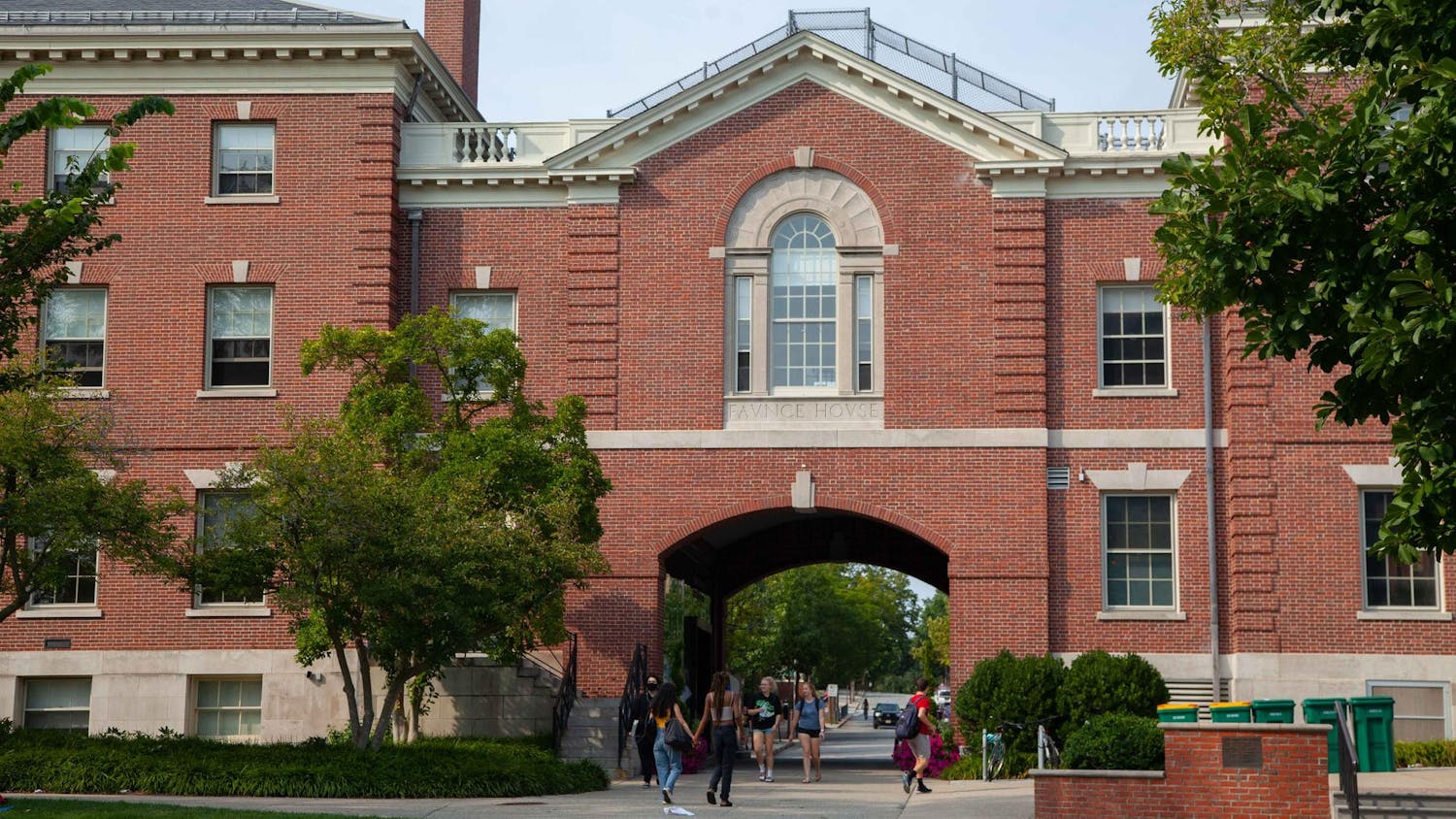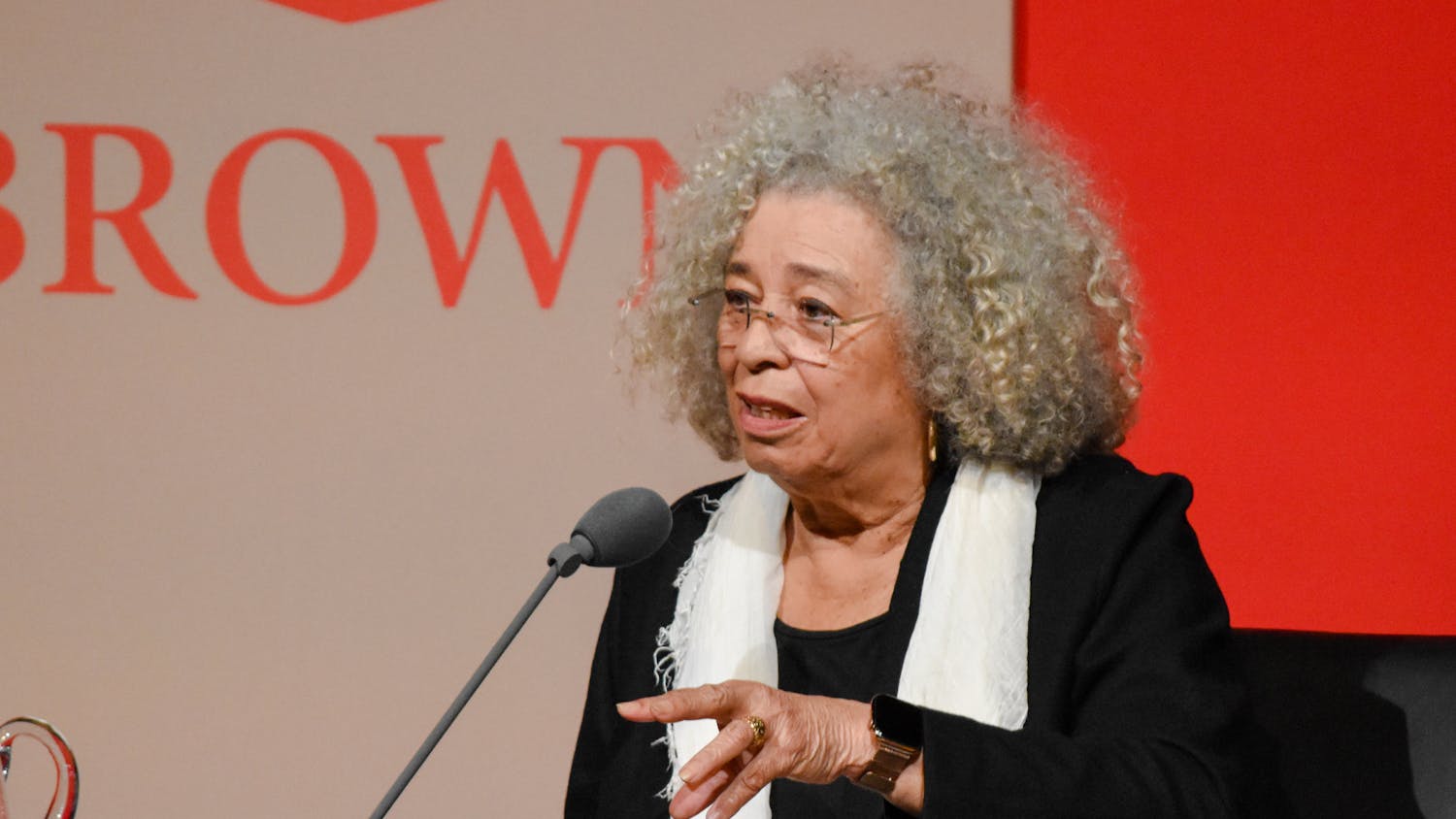This is the first of two stories in a series titled, “Far from Home: Navigating Brown,” which explores the experiences of international students at the University.
For some students, coming to the University means traveling a few hours away from family to receive an Ivy League education. For others, choosing Brown means living a hemisphere away from home in a foreign and challenging environment. The latter experience rings especially true for many low-income international students, who often arrive on campus facing broad cultural differences, limited financial means and an unfamiliar social setting.
“When I was a first-year, I struggled a lot with a language barrier and the lack of an international community,” said Beatriz Silveira De Arruda ’19, an international student from Brazil and a member of the International Leadership Advisory Board.
While these students still face unique challenges when they arrive on campus, the University has expanded resources over the past few years to support low-income international students.
Confronting and challenging stereotypes
After arriving to College Hill, some international students say that they have grappled with the stereotype of the “typical” international student — someone who hails from a cosmopolitan and wealthy background.
“The first thing is to recognize that the (low-income international student) population exists on campus,” said Divya Mehta ’18, the International Student Career Coordinator. People often struggle to see beyond the preconceived image that all international students are wealthy, she added.
“I would say that most of my international friends — who I met as mentors in (the International Mentorship Program) — are either middle class or low income,” said Eleni Gkini ’21, an international student from Greece. Gkini, who is on full financial aid, said that she struggles with the pressure of people assuming that she is wealthy. The International Mentorship Program is a peer-support program for incoming international students and manages orientation for international students, according to the Global Brown Center’s website.
Students can also face pressure to assimilate into the predominantly American culture on campus. The transition into the American education system can be demanding for international students, particularly if they did not attend an international or American high school in their home country. “I didn’t go to an American school, I went to a Greek school, so I’m unfamiliar with a few of the concepts and topics” presented in classes, Gkini said.
The price of Brown
Currently, “there are 129 international students receiving University need-based scholarships, with an average scholarship of $58,904,” said James Tilton, the dean of Financial Aid. This represents 15 percent of the international student population and costs approximately 7.8 million dollars, making up six percent of the total financial aid budget, he added. These students make up two percent of the undergraduate student population.
Low-income international students often face distinct financial challenges compared to domestic students.
“Low-income international students face varied financial pressures besides the cost of attendance, such as travel costs, scholarship tax and taxes on research awards, costs related to extracurricular activities and commencement and costs related to room and board when school is not in session,” wrote Asabe Poloma, assistant dean for international students, in an email to The Herald.
For many of these students, purchasing winter clothing and textbooks can be a significant financial burden, Silveira De Arruda said.
In addition, navigating the University’s system to receive financial aid can be a complicated process. Barring truly exceptional circumstances, international students who do not apply for financial aid when they enter the University cannot re-apply during their time on College Hill, Silveira De Arruda said.
But a student’s financial situation can change while in college, and even international students who do not receive financial aid may struggle financially to pay the University’s tuition, she added. “There are students on financial aid, external scholarships and fellowships from their (home country) governments.”
And for students from countries with depreciating currencies, Brown’s tuition has become three to four times more expensive, Silveira De Arruda said. Many low-income international students must rely on external donors, and if the donors discontinue their support, it becomes increasingly difficult for students to pay full tuition.
Over the past two years, the University has looked into the different circumstances that low-income international students face in their home countries to address changing costs of attendance, Tilton said. If a student did not initially apply to receive financial aid, “there is a process for very extreme circumstances for students to appeal the decision and that would be reviewed by me and the Dean of the College, and we would make the decision whether the students could apply for financial aid or not,” he added.
Along with cost barriers within the University, low-income international students can also face challenges building a career outside of their home country, particularly if they pursue careers in fields outside of finance, consulting and tech, Mehta wrote in a follow up message to The Herald. Finding paid internships is more difficult and “meeting the costs of living in places like New York City or Washington DC is incredibly challenging (and) … may affect a student’s ability to build their social capital in the U.S.,” she added.
It can also be more difficult for low-income international students to leverage contacts to find internships, as they often lack a broad network of contacts in the U.S., Mehta said. Although the University has some human resources to help low-income international students find internships, the financial resources dedicated to helping students find opportunities are relatively limited, she added.
Increasing resources for international students
The University has bolstered its support for resources that aid international students academically and professionally.
For instance, through the Dean of the College’s office, Poloma and Mehta now offer “identity-based advising” tailored to international students’ varying backgrounds, Mehta said. In addition, the International@Brown Canvas page started featuring listings from Kaplan this year for free GRE, MCAT and LSAT resources and links to the Brown Student Agencies website that provides subsidized Kaplan books.
Christina Bonnel, the program director of the Global Brown Center, has also given students consistent support, providing career and financial advice and occasionally referring students to a Certified Public Accountant to assist with taxes, Gkini said.
To help international students who cannot travel home during breaks, the University launched the “Break Gaps Program” under the direction of Dean Vernicia Elie. The program “provides all international undergraduate students who need financial assistance with winter and spring break housing and meals when school is not in session,” Poloma wrote in an email to The Herald.
Additionally, income-eligible international students can apply for “Emergency Gap Funds” to cover costs related to curricular and extra-curricular opportunities.
These funds can be used to purchase necessities like winter clothing, Gkini said.
The University also provides airport transportation for first-year international students who are either on financial aid or are traveling alone, Bonnel said.
For Silveira De Arruda, the experience of being alone in the United States without a cell phone would have been less stressful if a shuttle system existed during her first year at Brown. The shuttles were “definitely something I would have used,” she added.
The University also provides direct financial support to low-income international students through loans and grants.“In response to international students sometimes having difficulty borrowing, we have set up a loan program on campus that they can apply (for) through the Office of Financial Aid,” Tilton said. These loans match interest rates paid by domestic students for federal loans, he added.
Although the University offers a number of resources for low income international students, many people are unaware that the support exists, Gkini said. “A lot of international students aren’t used to having so many resources and usually try to figure out things for themselves,” she added.
To that end, the University should focus on making these resources more visible so that students in need are aware of them, said Jose Soria ’19, a student from Spain and a member of the International Student Advisory Board.
Along with a lack of visibility, some low income international students are dissuaded from taking advantage of available funding due to stigmas around asking for help, Gkini said. In order to improve access, the University could do more to de-stigmatize the use of resources, she added.
Building Community
As a relatively small group on campus, some low-income international students said they struggled to find a sense of community when they first arrived at Brown. As a result, students have often had to invest time and effort to build one, a task that has progressively grown easier with increased support from the University.
Many low income international students can now find community through IMP, but that trend is a new development, Silveira De Arruda said. Three years ago, IMP lacked an infrastructure to allow students to meet each other in a meaningful way. “As an IMP mentor, we threw one of the events with a budget of $25,” she said.
The program’s infrastructure has grown over time. Based on 2017 numbers, there were 280 students who participated in the 2017 international student’s orientation, according to the Global Brown Center’s website.
Though Silveira De Arruda struggled with social and financial barriers when she first arrived on campus, her experience has “really improved with the (international student) lounge and the Global Brown Center events.”
The growth of programs like IMP and the creation of departments like the Global Brown Center, which opened in 2017, reflect the University’s shift to allocate more resources to support international students socially and financially. Alongside increased advising opportunities, the University has also offered to cover individual loans and external costs that accompany being a student at Brown.
Although there is still work to be done to provide the most inclusive atomosphere possible for low-income international students, the University has made significant progress towards this goal, Silveira De Arruda said. “Brown doesn’t even look like the same place since I arrived.”





